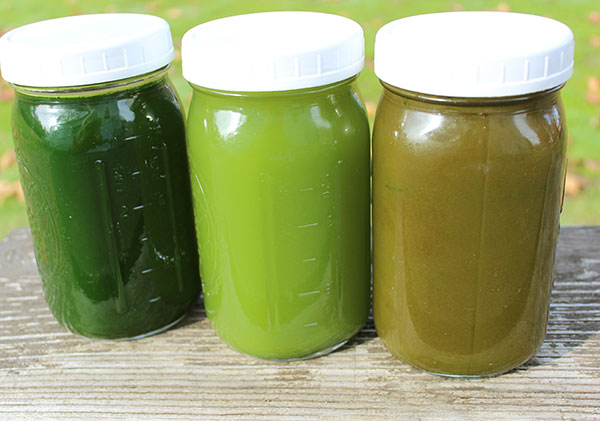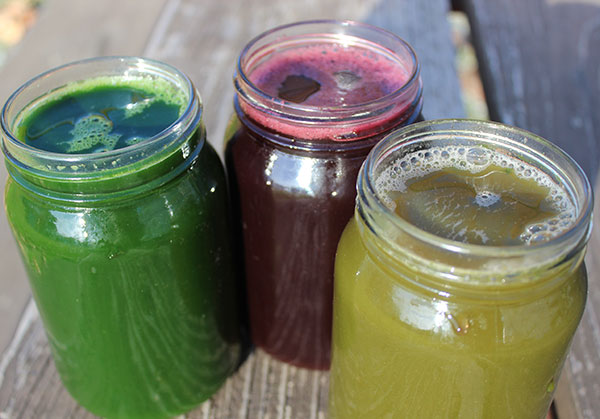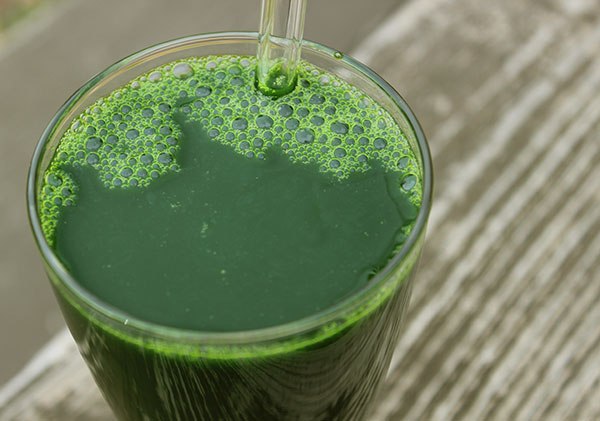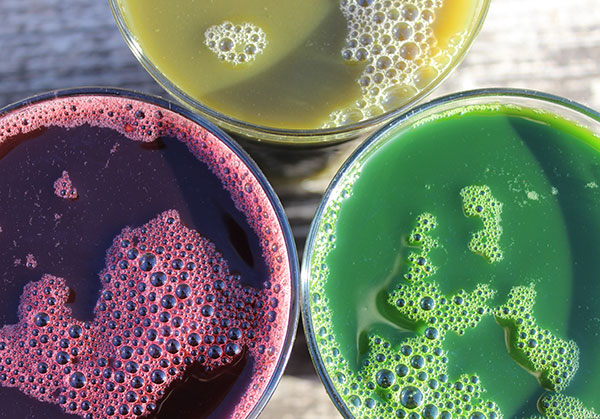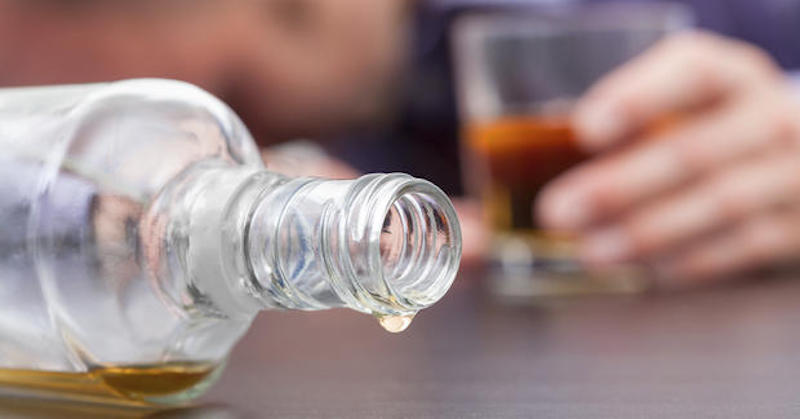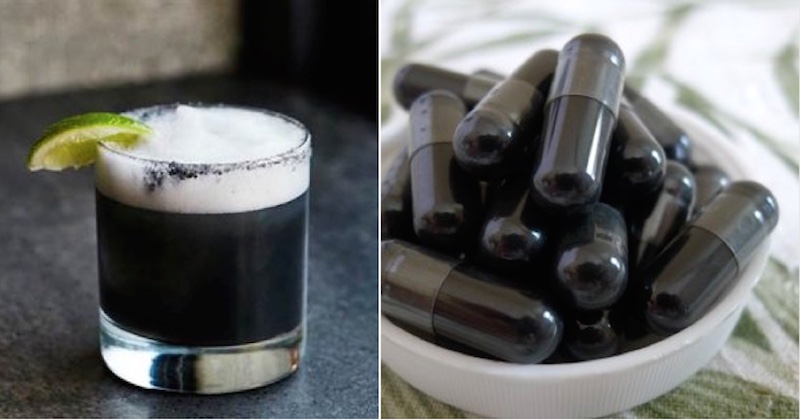Activated charcoal is a potent natural treatment used to
trap toxins and chemicals in the body, allowing them to be flushed out
so the body doesn’t reabsorb them. It’s made from a variety of sources,
but when used for natural healing, it’s important to select activated
charcoal made from coconut shells or other natural sources.
One of the most popular activated charcoal uses is for the safe and
effective treatment of poisoning and drug overdoses. It’s used in
emergency trauma centers across the world. In addition, it’s used to
reduce bloating and gas, lower cholesterol, treat bile flow problems
safely during pregnancy, and even prevent hangovers.(1)
Research shows that activated charcoal works better than stomach pumping (gastric lavage) in some situations.(2)
What Is The Difference Between Charcoal And Activated Charcoal?
Charcoal is a porous black solid form of carbon, obtained as a
residue when wood, bone or other organic matter is heated in the absence
of air. You may think of charcoal as a residue leftover from a fire,
and you’re not wrong.
Charcoal is
commonly used around the house, for barbecue, in water treatment
systems, in air purification, sewage treatment, in vacuum cleaners and
in creating art.
Activated charcoal (or activated carbon) has oxygen
added to it to increase its porosity, thus adding to its surface area.
Due to its high degree of microporosity, activated carbon has a far
larger surface area for binding with toxins.
How Does Activated Charcoal Work?
Activated charcoal works by trapping toxins and
chemicals in its millions of tiny pores. Typically, however, it’s not
used when petroleum, alcohol, lye, acids or other corrosive poisons are
ingested.
It doesn’t absorb the toxins, however. Instead it works through the chemical process of adsorption. In the body, absorption is the reaction of elements, including nutrients, chemicals and toxins, soaked up and assimilated into the blood stream. Adsorption is the chemical reaction where elements bind to a surface.
The porous surface of activated charcoal has a negative electric
charge that causes positive charged toxins and gas to bond with it. The
nooks and crannies in activated charcoal are created through a heating
process.
It’s important to note that activated charcoal is not charcoal used in your barbecue grill! Barbecue charcoal is loaded with toxins and chemicals, and must never be consumed.
Top 10 Activated Charcoal Uses
Whenever you take activated charcoal, it’s imperative to drink 12-16
glasses of water per day. Activated charcoal can cause dehydration if
adequate amounts of water aren’t consumed in tandem. In addition, this
helps to flush out the toxins quickly and prevents constipation
experienced by some individuals.
In addition to being a safe and effective treatment for poisonings
and the removal of toxins from the system, additional activated charcoal
uses include deodorizing and disinfecting, and it’s an important step
to cure Lyme disease. Here are the top 10 activated charcoal uses:
1. Activated Charcoal For Teeth Whitening
Have your teeth become stained from coffee, tea, wine or berries?
Activated charcoal helps whiten teeth while promoting good oral health
by changing the pH balance in the mouth, helping prevent cavities, bad
breath and gum disease.
It works to whiten teeth by adsorbing plaque and microscopic tidbits
that stain teeth. This activated charcoal use is cost-effective and an
all-natural solution for a bright smile.
BE CAREFUL, it can (and will) stain grout and fabrics. Protect counters, floors and clothing before using.
To whiten your teeth naturally, wet a toothbrush and dip into
powdered activated charcoal. Brush teeth as normal, paying special
attention to areas showing the most staining. Sip a bit of water, swish
through mouth thoroughly and spit. Rinse well, until spit is clear.
For best results, brush your teeth with activated charcoal two-three times per week.
Note: If you have crowns, caps or porcelain veneers,
it’s possible that activated charcoal will stain them. In addition, if
your teeth become sensitive, quit using it.
2. Activated Charcoal For Alleviating Gas and Bloating
One activated charcoal use often overlooked is to alleviate
uncomfortable gas and bloating. It works by binding the gas-causing
byproducts in foods that cause discomfort.
A study in the American Journal of Gastroenterology found that
activated charcoal prevents intestinal gas following a typical
gas-producing meal.(4)
Dosing recommendations to alleviate gas and bloating: Take 500
milligrams one hour prior to a typical gas-producing meal, with a full
glass of water. Follow with an additional glass of water immediately
thereafter to help get the charcoal into your system, where it can bind
with gas-producing elements.
3. Activated Charcoal Detox — Treats Alcohol Poisoning And Prevents Hangovers
While activated charcoal does not adsorb alcohol, it does help
quickly remove other toxins from the body that contribute to poisoning.
Alcohol is rarely consumed in its pure form; mixers that include
artificial sweeteners and chemicals are common. Activated charcoal
removes these toxins.
In addition, when activated charcoal is taken at the same time as
alcohol, some studies show it can significantly reduce blood alcohol
concentrations.(5)
Princeton University’s First Aider’s Guide to Alcohol indicates that activated charcoal is administered in some situations related to alcohol.(6) This includes if the individual is unconscious or showing signs of acute alcohol poisoning.
4. Activated Charcoal For Mold Cleansing
Most people don’t think about mold living in their bodies, but it can. Toxic mold causes depression, kidney
and liver failure, decreased brain function, heart disease, eye
irritation, headaches, vomiting, impaired immune system function, and
severe respiratory distress.
Homes that have flooded, or even those with small leaks under a
sub-floor or in the walls, can create an environment where mold can
thrive. Poor ventilation contributes to the problem, and bathrooms,
basements and laundry rooms are particularly prone to mold growth.
If there is visible mold in your home, it must be mitigated properly.
It’s important to wear gloves and a protective mask to keep from
inhaling toxic mold during cleanup. Baking soda, apple cider vinegar,
tea tree oil and borax can be used to clean mold off hard surfaces and
keep mold from growing in the future.
If you or your family experience symptoms including wheezing, rashes,
watery eyes, coughing or headaches that aren’t explained in other ways,
your home should be evaluated for mold spore levels, even if no visible
mold is detected. It can thrive behind drywall, under floors and in
ventilation ducts.
5. Activated Charcoal For Water Filtration
Activated charcoal traps impurities
in water including solvents, pesticides, industrial waste and other
chemicals. This is why it’s used in water filtration systems throughout
the world. However, it doesn’t trap viruses, bacteria and hard-water
minerals.
According to a study published in the Journal of the Canadian Dental Association, activated carbon filters (activated charcoal), removes some fluoride. (7). Avoiding fluoride and detoxing from it is important for oral health, proper immune system functioning, and healthy kidneys and liver.
Drinking water is essential to good health; however, typical tap
water is toxic and laden with chemicals, toxins and fluoride. Ingestion
should be limited whenever possible. Activated charcoal water filters
are available for whole-home systems, as well as countertop models.
Drink eight-10 glasses of pure water per day to help soothe the
digestive tract, fight fatigue, keep organs operating, and provide
lubrication for joints and tissues.
6. Activated Charcoal For Emergency Toxin Removal
As mentioned above, one of the most common activated charcoal uses is
to remove toxin and chemicals in the event of ingestion. Most organic
compounds, pesticides, mercury, fertilizer and bleach bind to activated
charcoal’s surface, allowing for quicker elimination, while preventing
the absorption in the body.
Activated charcoal is also used in the event of an accidental, or
purposeful, overdose of many pharmaceutical drugs and over-the-counter
medications. It’s effective for aspirin, opium, cocaine, morphine and
acetaminophen. It’s important that the proper amount is administered as
quickly as possible — definitely within an hour of ingestion.
In the event of poisoning, call 911 immediately. Proper dosing is
imperative. According to the University of Michigan Health System, 50 to
100 grams (not milligrams!) is used in cases of poisoning in adults and 10 to 25 grams for children.(8)
In addition, activated charcoal can be used in cases of food
poisoning when nausea and diarrhea are present. Adults take 25 grams at
onset of symptoms or when food poisoning is suspected, and children
should be given 10 grams. Increase dosage as necessary. Remember, it’s
essential that adequate water is consumed when activated charcoal is
taken.
7. Activated Charcoal For Skin And Body Health
Activated charcoal uses extend beyond internal applications. For
external treatments, it’s effective at treating body odor and acne and
relieving discomfort from insect bites, rashes from poison ivy or poison
oak, and snake bites.
After a mosquito bite or bee sting, mix one capsule of activated
charcoal with ½ tablespoon of coconut oil, and dab on affected area.
Reapply every 30 minutes until itching and discomfort are gone. As
activated charcoal stains nearly everything it touches, wrap with a
bandage.
To treat bites from snakes and spiders, including the Brown Recluse
or Black Widow, you want to cover a larger area than just a small
bandage, as the bacteria and viruses that lead to tissue damage need to
be mitigated quickly.
Create a wrap out of fabric that’s big enough to go around the
affected area twice. Dab the mixture of coconut oil and activated
charcoal on the fabric, and wrap. Secure with bandages. Reapply every
two to three hours, rinsing well between applications.
To treat acne, mix one capsule of activated charcoal with two teaspoons of aloe vera
gel, and smooth over face. Let dry and rinse off completely. The
activated charcoal binds with environmental toxins and dirt that
contribute to acne. It’s also good for spot treatments.
8. Activated Charcoal For Digestive Cleanse
Activated charcoal uses help promote a healthy digestive tract by
removing toxins that cause allergic reactions, oxidative damage and poor
immune system function.
By removing the toxins from your system, you can reduce joint pain, increase energy and increase mental function.
Environmental factors, including pesticides on food, chemicals in the
water we drink and exposure to mold, create a toxic burden in our
bodies. It’s important to routinely cleanse the digestive tract to
support overall health and wellness. To complete a digestive cleanse
with activated charcoal, take 10 grams 90 minutes prior to each meal,
for two days.
During the cleanse, eat only organic fruits and vegetables, grass-fed
meat, and wild fish. If during the cleanse you find you are
constipated, this is a sure sign you’re not consuming enough water!
Drink a glass of warm water with a slice of lemon and a touch of honey
every half hour until constipation is relieved.
9. Activated Charcoal For Anti-Aging
Activated charcoal uses include
helping prevent cellular damage to kidneys and liver, as well as
supporting healthy adrenal glands. It’s imperative to cleanse toxins and
chemicals routinely from the body. Activated charcoal benefits major
organs by helping the body flush out the toxins and chemicals that cause
the damage.
Aging is a natural part of life, but due to the toxic load we are
exposed to through food, our homes and workplaces, and our environment,
to prevent pre-mature aging we must get rid of them.
For this activated charcoal use, take two capsules per day after exposure to nonorganic foods, heavy metals or after contact to other toxins. This supports better cognitive function, a reduction in brain fog, healthier kidney and liver function, and a healthier digestive tract.
10. Activated Charcoal Reduces High Cholesterol
Studies around the world show that activated charcoal reduces bad
cholesterol and increases good cholesterol as much as some prescription
medications. In one study, total cholesterol decreased by 25 percent,
LDL cholesterol decreased by 41 percent, while HDL increased by
8 percent — in just four weeks.(9)
Study participants took three doses of eight grams each for the
period of the study. As mentioned below, don’t take activated charcoal
within 90 minutes to two hours of taking any prescription medication or
supplements as it can prevent proper absorption.
Activated Charcoal For First Aid
I recommend activated charcoal as a part of first aid kits, both at home and at work.(3)
In the event of an emergency where toxins, drugs or chemicals are ingested, it’s imperative to call 911 immediately.
If you have activated charcoal on hand, be sure to tell the operator;
the operator may advise to administer it prior to the first responder’s
arrival.
Depending on the amount of toxins or chemicals ingested and types of
toxins, multiple doses may be required. At the hospital, physicians are
able to administer more as needed.
Activated Charcoal Side Effects
For the activated charcoal uses mentioned here, it’s generally deemed
safe for most individuals. However, it’s always good to be aware of
any medical conditions such as intestinal bleeding or blockages, holes
in the intestines, chronic dehydration, slow digestion, or a recent
abdominal surgery, as they may affect how activated charcoal reacts in
your body.(10)
Additionally, activated charcoal can interfere with the absorption of
nutrients, supplements and interfere with prescription
medications. Take activated charcoal 90 minutes to two hours prior to
meals, supplements and prescription medications. Potential adverse
interactions with the following drugs can occur:(11)
- Naltrexone (used for alcohol and opioid dependence)
- Acrivastine
- Bupropion
- Carbinoxamine
- Fentanyl
- Hydrocodone
- Meclizine
- Methadone
- Morphine
- Morphine Sulfate Liposome
- Mycophenolate Mofetil
- Mycophenolic Acid
- Oxycodone
- Oxymorphone
- Suvorexant
- Tapentadol
- Umeclidinium
- Acetaminophin
- Tricyclic antidepressants
- Theophylline
Users may also experience:
- Black stools – taking activated charcoal may cause darkening of your stool. Do not panic.
- Black tongue – when used on the teeth, it may temporarily blacken tongue. This is harmless.
- Constipation – as activated charcoal is absorbing, it may cause
temporary constipation. Drink more water when taking this product.
Buying Activated Charcoal
When selecting activated charcoal
for any of the uses above, it’s vital that you know what it’s made from.
Not all activated charcoal supplements are created equally.
Look for activated charcoal made from coconut shells or identified wood species that have ultra-fine grains.
Here are a few suggestions on activated charcoal personal care products that we like:
-
Activated charcoal capsules
If you’re taking activated charcoal for internal cleansing: tablet or
capsule forms are recommended, although I prefer it in capsule form.
With capsules, you may open them up and use the powder for other
purposes, such as for teeth-whitening, or for the occasional skin
breakouts or insect bites.
Nature’s Way Activated Charcoal and Premium Coconut Activated Charcoal are two brands that I trust for use as a natural adsorbent agent.
-
Activated charcoal powder form
Activated charcoal in powder form is versatile for use. You can use
it to make your own toothpaste, facial mask, for your hair and skin,
even to be added in smoothies for a quick cleansing every now and then.
It is ideal for use also on your pet animals. Get this food grade Hardwood Activated Charcoal Powder.
If you prefer to get prepared activated charcoal mask, instead of mixing your own, then you should try this Activated Charcoal Mud Mask
that is combined in Dead Sea mud. It is helpful for shrinking facial
pores, clearing up acne, exfoliating, removing dead skin cells, micro
particles, blackheads and dirt off the skin.
Some users have reported that activated charcoal bar soap has helped
them relieve their skin breakouts in cases of psoriasis, eczema and
acne. Use as a face soap, body wash or hand soap.
I like the ingredients that go into this particular activated Charcoal Soap Bar.
It is handmade soap bar and suitable for sensitive skin. The soap bar
contains: activated charcoal, Dead Sea mineral mud, olive oil, coconut
oil, sustainable palm oil, goat’s milk, peppermint, rosemary and
eucalyptus essential oils.
-
Activated charcoal toothpaste
If you have purchased activated charcoal in capsule or powder form, use it to make your own teeth-whitening agent, or tooth powder. Or just add powder from one capsule onto your favorite toothpaste and use.
How To Use Activated Charcoal Internally
- Activated charcoal is great for removing toxins when needed, it is not meant for long-term use.
- Take activated charcoal at least two hours away from your medicines or supplements.
- Use activated charcoal as soon as you realize the ingestion of toxins.
- Drink lots of water when taking activated charcoal supplement, to prevent constipation.
- Follow the directions on the packaging on dosage and maximum amount to take in a day.

